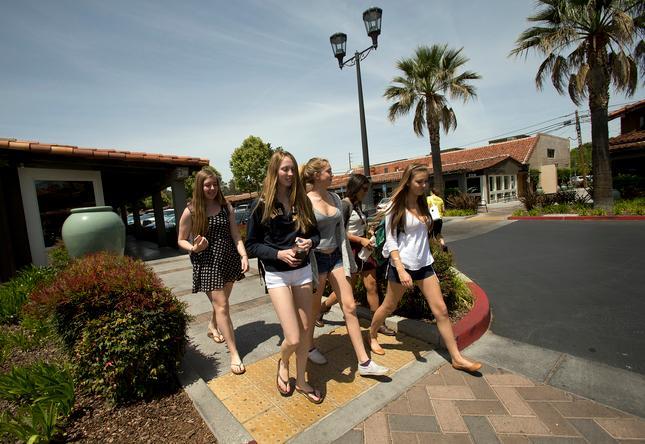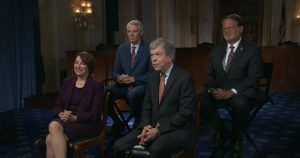PALO ALTO — As the Bay Area retail sector recovers from the coronavirus pandemic, one of its premier shopping centers on the Peninsula won’t be allowed to rent out space for medical services despite the owner’s worries about high vacancy rates.
The Palo Alto city council on Monday voted 5-2 to deny Town and Country Village’s application to allow retail-oriented medical services like Botox clinic Orange Twist and boutique healthcare provider Carbon Health after nearly a third of the shopping center’s tenants shut their doors during the pandemic.
Though skeptical, the council asked the Planning and Transportation Commission in March to take a second look at the shopping center’s application, when the shape of the economic recovery from COVID-19 wasn’t clear. The commission recommended the council adopt new rules that would limit health retail to 10% of the shopping center, that no medical uses face El Camino Real or Embarcadero Road and requirements orienting the space toward retail shoppers.
But on Monday a majority of council members were optimistic that the post-pandemic economic recovery will translate into less vacancies at Town and Country Village without having to make drastic changes.
The shopping center’s owner Jim Ellis hoped the shift toward medical-retail would keep him from losing out on rents. Ellis said Monday he has dropped rents between 20% and 25% for tenants in the shopping center and are continuing their rent relief program.
Despite Ellis’ clamor for a change that would quickly fill vacancies with some of the about a dozen retail-oriented medical service providers that already expressed interest, Mayor Tom DuBois said during the council meeting that he’d like the council to deny the application and instead wait for the results of a retail impact study commissioned during last week’s session.
“It doesn’t rise to a priority for me in terms of the other things we have in our work plan,” DuBois said early on in Monday’s hearing.
Council member Eric Filseth said the council was “sucking up a lot of energy and staff time on this which is a pretty small-scale impact for a lot of the other efforts we have going on. Let’s leave it the way it is for a while.”
Councilman Greer Stone agreed with DuBois, saying that Town and Country Village lacked sufficient evidence of its dire economic situation. Multiple times council members asked Jim Ellis and his company Ellis Partners to disclose the rents at the shopping center, but they did not give direct figures.
Stone pointed to the shopping center’s prime location — nestled between Palo Alto’s bustling downtown, Palo Alto High School, Stanford University and the Sutter Palo Alto Medical Foundation — as a reason for his optimism that it will be able to recover to pre-pandemic levels.
“There’s no reason why we’re seeing high vacancy rates” at Town and Country Village, Stone said. “When this matter first can to us in March we were in a very different situation and the outlook for an economic recovery was not as good as it is now. It’s just too soon.”
Accepting the ordinance as staff wrote it would have “opened the barn doors to things that are more medical office than health retail,” said Vice Mayor Pat Burt, who was concerned that retailers would use the city’s vague language to bring things like urgent care facilities to the shopping center.
“We’re going to see a huge transformation in just a week,” Burt said. “Within a month or two, we will have a much better sense of what the recovery really looks like.”
But Councilman Greg Tanaka, one of two dissenting votes, said allowing medical uses like orthodontists and other cosmetic therapies would increase foot traffic at the shopping center, adding that the bourgeoning sector of retail-oriented medical “fits into the dynamic shifts” in retail as more people shop online.
“The urgency here is that we want to be flexible,” Tanaka said. “It’s important that we enable these places to get filled and I think these retail health types of uses drive traffic. You have a captive audience, it seems to make a lot of sense.”
Councilwoman Alison Cormack, who also dissented, supported including retail-oriented medical services in part because traditional retailers like clothes and furniture stores have historically not done well. For her the suggestion of including new medical uses with retail “makes sense.”
“I think having it at 10% really just is a minor experiment,” Cormack said. “I’m open to doing forward for the same reason as before which is that I’ve talked wit people and they are interested in having these services available.”



















